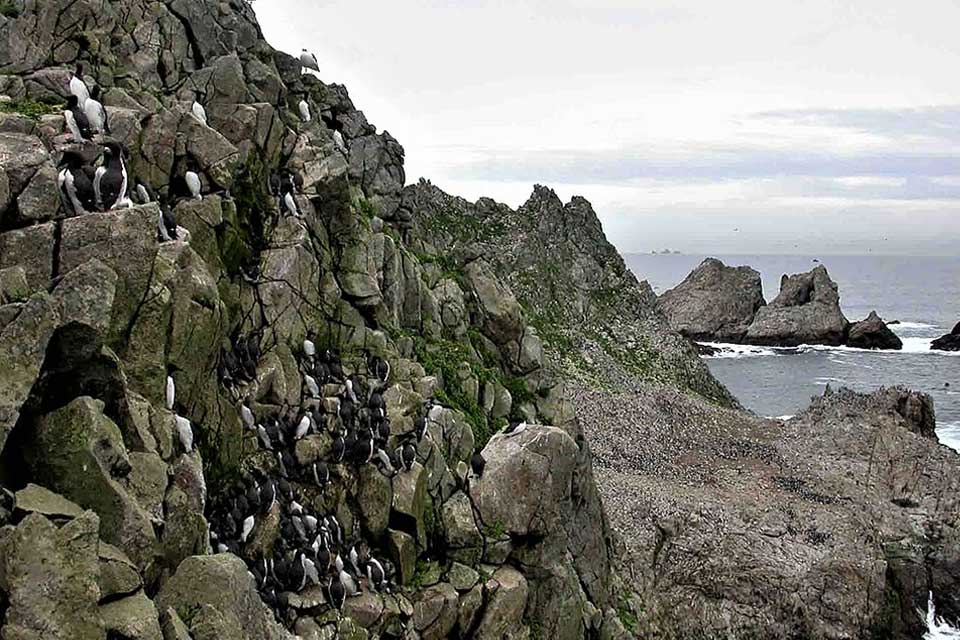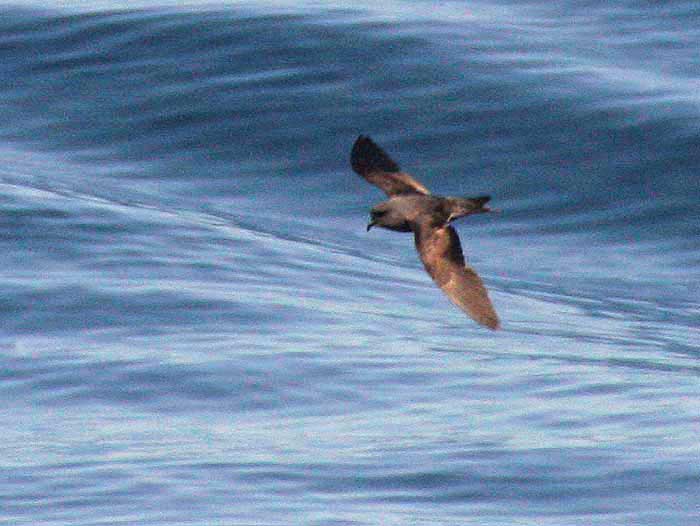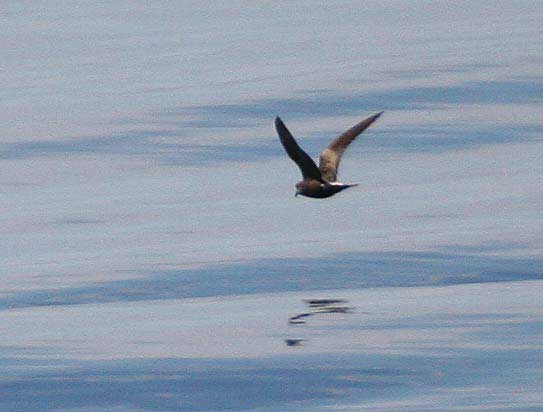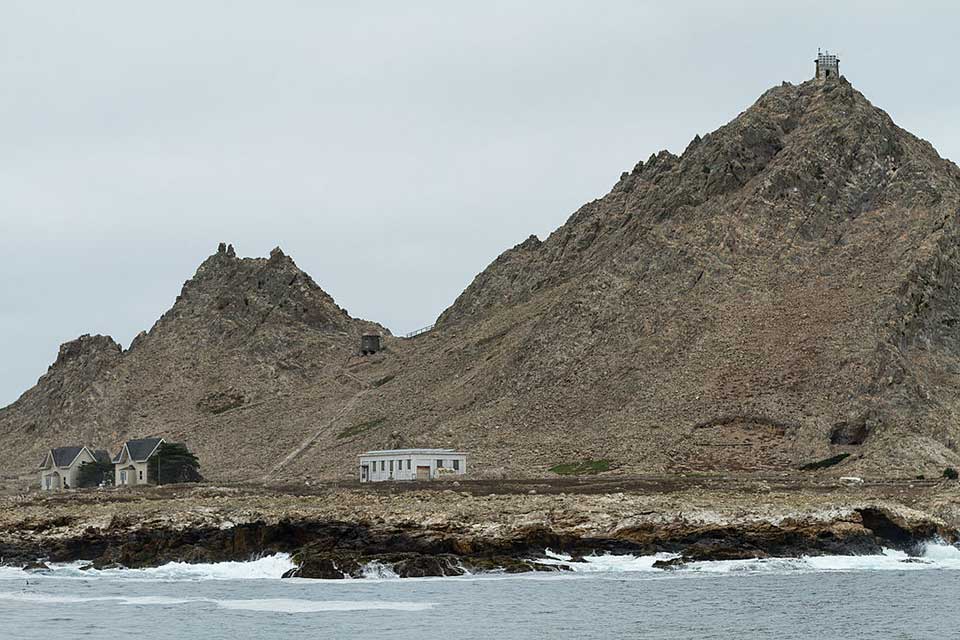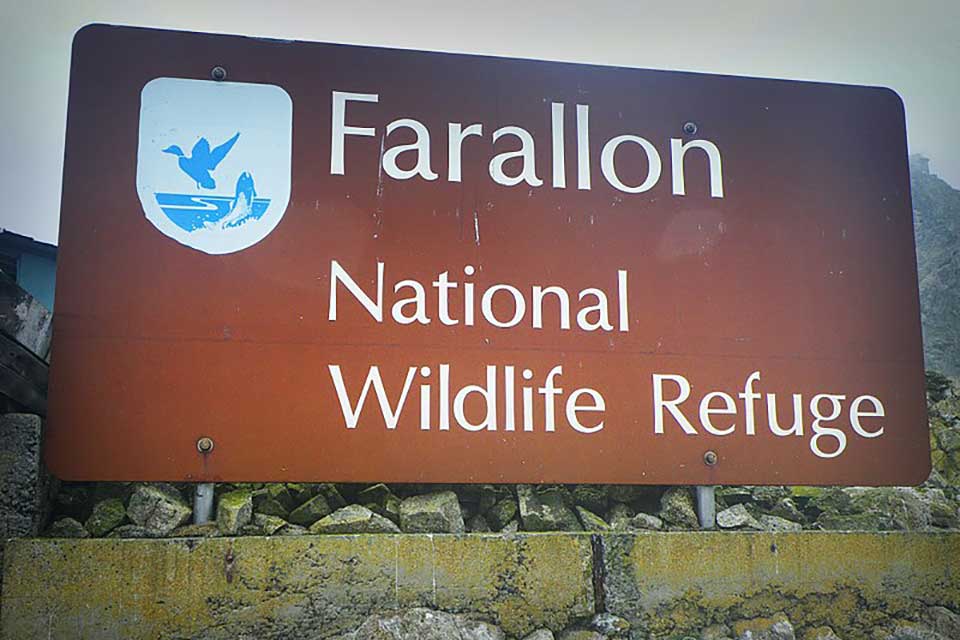
Farallon Islands at Risk
MARIN AUDUBON SOCIETY SUPPORTS FARALLON ISLANDS MOUSE ERADICATION PLAN
Marin Audubon has a long history of supporting restoration of the Farallon Islands habitats. Below you will find articles that appeared in Marin Audubon Society’s newsletter, THE RAIL, over the last seven months, beginning with the Introduction to our successful webinar on the Eradication Plan, featuring scientists who have worked on the Islands. held in July, 2020. The articles have undergone minor editing to remove outdated and repetitive information. The link to the webinar is in the first paragraph below.
INTRODUCTION TO FARALLON ISLANDS MOUSE ERADICATION WEBINAR
Held July 17, 2020
Thank you for your interest in the project to restore the Farallon Islands and for registering for the upcoming webinar. You will hear presentations from our expert panelists. You can watch the program below. The link to the program is here.
In this time of global warming and other human-caused stressors to the natural environment, the US Fish and Wildlife Service’s plan to remove invasive mice from the Farallon Islands would restore the islands to a more natural and balanced habitat. Introduced, non-native mice contribute to the rare Ashy Storm Petrel being on an extinction trajectory as well as impacting the endemic Farallon Camel Cricket and Farallon Arboreal Salamander. Mice feed on native vegetation, promoting non-native plants, and, over time, may attack the nestlings of native seabirds, as has happened on other islands.
The methodically vetted plan draws on long-term studies starting in 1968, with planning dating back to 2004. Since 2007, 28 of the 30 mouse eradications undertaken on islands have been successful with the remaining two still in the monitoring period. See this video of a similar successful project in Southern California: https://www.youtube.com/watch?v=E7xhpaK648U.
The one-time use of a rodenticide – specially permitted for island restorations only – is vastly different from the chronic over use of rodenticides in agriculture and home use on the mainland. As 994 previous island restorations around the world have demonstrated, there is only one way to successfully eradicate introduced rodents. Not a single island has been successfully treated by an alternative method.
Some have suggested alternative solutions, including contraception. A contraceptive approach to eradication is unavailable and therefore infeasible because it has not undergone sufficient testing or environmental review, nor received necessary permits. Contraception might work as a method of control (e.g., to reduce rat populations in a food warehouse), but not eradication (eliminating 100% of the population), which is what is required on the Farallones. Infertility is temporary and would be reversed over time.
If there were a feasible non-lethal means of removing the introduced mice, the many highly trained scientists who have worked on this project for decades and have dedicated their lives to the restoration of the Farallones would have embraced it.
Although adverse impacts to other species may not be avoided completely, these will be short-term to individuals, rather than having lasting effects at a population level. The Fish and Wildlife Service has been falsely accused of saying “at least 1,000 Western Gulls” would die. The truth is that this number represents a theoretical modeling number of lost gulls at which there might be a long-term impact to the gull population. Based on tested hazing trials to keep gulls away from the island, the number of gulls inadvertently killed could be as low as zero.
The Marin Audubon Society is pleased to join other leading organizations involved in marine and bird conservation in support of the eradication plan, including:
American Bird Conservancy
Audubon California
BirdLife International
Citizens Committee to Complete the Refuge
Farallon Islands Foundation
Farallon Marine Sanctuary Association
Freshwater Life
Golden Gate Audubon Society
Marin Audubon Society
Marin Conservation League
Marine Endeavors
National Audubon Society
Natural Heritage Institute
Oceanic Society
San Diego Audubon Society
Save the Bay
Sequoia Audubon Society
South Georgia Heritage Trust
The Nature Conservancy
Agreement on the Conservation of Albatrosses and Petrels
California Academy of Sciences
California Institute of Environmental Studies
Coastal Conservation Action Lab
Institute for Bird Populations
Island Conservation
Pacific Seabird Group
Oikonos
Point Blue Conservation Science
International Bird Rescue
Oiled Wildlife Care Network
THE FOLLOWING ARTICLES APPEARED IN MARIN AUDUBON SOCIETY’S NEWSLETTER, “THE RAIL” IN THE MONTHS NOTED:
FARALLONES UPDATE (Reprint from THE RAIL January 2021)
The Farallon Islands Mouse Eradication Project is still on track for a hearing in spring. So there is still a need, and there is still time, for you to send comments stating your support for the Eradication Plan’s consistency with the Coastal Zone Management Program. Here are points you can use:
- The goal of the eradication is restoration of the unique ecosystem of the Farallon Islands.
- The choice is clear: save the non-native mice that are decimating the islands’ indigenous and rare species or save the islands’ indigenous species. These include nesting Leach’s and Ashy Storm Petrel, Farallon Arboreal Salamander, and Farallon Camel Cricket.
- Complete eradication is essential. If even a few mice are left, the infestation will simply recur.
- The only alternative is a carefully planned one-time application, in two phases, of a rodenticide. Similar programs have been used to successfully remove non-native rodents on 700 islands throughout the world with no significant environmental effects or harm to non-target species.
- Even the person who developed the birth control chemical for rats has admitted that such a chemical for mice does not exist and that temporary sterilization only reduces, but does not eradicate, populations. Total eradication is the only viable alternative.
In case you missed it or would like to refresh your memory, here is a link for our Farallones Zoom program presented last summer.
WHAT YOU CAN DO
Send your comments to the dedicated email farallonislands@coastal.ca.gov or to the Commission’s new address: 455 Mission Street, San Francisco CA 94105.
Use any of the points above or from the Zoom presentation. For more information see Point Blue Conservation Science’s website or MAS’s website, as well as the last six issues of THE RAIL.
FARALLON ISLANDS UPDATE (Reprint from THE RAIL December 2020)
The latest update is that the Consistency Determination hearing before the California Coastal Commission will not take place until March. The Commission is waiting to receive additional information from the U.S. Fish and Wildlife Service.
The Commission wants specific information on implementation that is not usually prepared until a project is approved. Normally the project is first approved and then the Service hires a contractor to implement the project. The first step in implementation is to prepare a work plan based on the approved project. Because the Commission is asking for some details in advance, the already understaffed Service must address these implementation details themselves.
So there is still a need, and there is still time, for you to send your comments in support of the Eradication Plan consistency with the Coastal Zone management Program. Here are points you can use:
- The goal of the eradication is restoration of the unique ecosystem of the islands.
- The choice is clear: save the non-native mice that are decimating the islands’ indigenous and rare species. These include nesting Ashy Storm Petrel, nesting Leach’s Storm Petrel, Farallon Arboreal Salamander, and Farallon Camel Cricket.
- Complete eradication is essential. If even a few mice are left, the infestation will simply continue.
- The only alternative is a carefully planned one-time event, (in two applications), of a rodenticide. Similar programs have been used to successfully remove non-native rodents on 700 islands throughout the world.
- Even the person who developed the birth control chemical for rats has admitted that such a chemical for mice does not exist and that temporary sterilization only reduces, but does not eradicate, invasive rodents.
We note that Assembly Bill 1788, the bill that prohibits use of rodenticides in California, has passed the legislature and is now law. AB 1788 has a specific exemption for island conservation purposes, allowing “The use of second-generation anticoagulant rodenticides for the eradication of nonnative invasive species inhabiting or found to be present on offshore islands in a manner that is consistent with all other applicable federal and state laws and regulations.” 12978.7(2)) (Section C.2).
FARALLONES (Reprint from THE RAIL November 2020)
We’re delighted to see the Ashy Storm-Petrel as the American Bird Conservancy’s bird of the week for October 8. Half of the world population of this at-risk bird nests off our coast on Southeast Farallon Island. They warn that the storm-petrel’s population is declining. The authoritative International Union for Conservation of Nature also lists it as Endangered. Among the threats are the “unusually high rates of predation by over-wintering Burrowing Owls, which are attracted to the island by high numbers of non-native House Mice.”
The American Bird Conservancy and the Marin Audubon Society are among the many conservation organizations supporting the US Fish and Wildlife Service restoration plan for the Farallones to remove the mice, using a specially formulated rodenticide for conservation purposes. However, there could be non-significant? impacts (not at a population level) to other species.
Some people have proposed contraception as an alternative method for eradicating the mice; however, this has yet to be proven as a viable method of eradication. The commercial veterinary drug company Senestech produces ContraPest, a contraceptive drug developed for rats. Loretta Mayer, CEO of the drug company, addressed a recent Marin Conservation League meeting could develop and permit a contraceptive product for mice in a very short time. However, in a trade publication (https://www.pctonline.com/article/menopausal-mice-may-hold-key-to-control-breakthrough/), she describes the following regarding her product for rats: “’It took us six years to get the formula just right,’ Mayer said.” Plus, it took her a number of years to get it permitted.
In another article, Mayer addressed another problem that renders ContraPest ineffective at the Farallones. She said that fertility control does not work when eradication is required (https://www.pctonline.com/article/loretta-mayer/): “Fertility control is not a silver bullet, it is a tool and needs to be used in conjunction with a full program. It can be most useful as a stand-alone product in areas such as parks and zoos where lethal means are a concern, whereas more sensitive sites such as food plants that have zero tolerance for pests and may require faster, more complete eradication, fertility control works best as a complement to existing IPM protocols,” she explained.
Complete eradication is the only solution on the Farallones. ContraPest, or a similar formulation, would require that bait stations be maintained in perpetuity, which is infeasible on these craggy remote islands. According to Wikipedia (https://en.wikipedia.org/wiki/SenesTech), “ContraPest is a form of a birth control or contraceptive, not a sterilant, so a continuous supply is required to maintain reduced populations.” (emphasis added)
The goal of the eradication plan is to restore the Farallones ecosystem to a more natural system. The presence of the introduced house mice is causing significant imbalance to the Farallones’ ecosystem and risking the survival of the rare Ashy Storm-Petrel and other species. The proposed US Fish and Wildlife Service plan is the only method proven to eliminate mice on islands. There simply is no other alternative that will work.
WHAT YOU CAN DO
The Commission still needs to hear from you. Commission staff have set up a dedicated email address: farallonislands@coastal.ca.gov or send comments to the Commission’s new address: 455 Mission, Suite 300, San Francisco, CA 94105.
Tell the Commission that the project is consistent with the Coastal Zone Management Program, the purpose of which is to maintain and restore the ecosystem of the islands. This has been the experience on hundreds of other islands where rodenticides also have been used to successfully remove rodents. For more information, see Point Blue’s website and MAS’s website. A similar treatment at the nearby Anacapa Island off the Southern California Coast documented effective removal of rats and, now ten years later, the island ecosystem has recovered and nesting species populations have rebounded.
RESTORATION PLAN FOR THE FARALLONES MISREPRESENTED (Reprint from THE RAIL October 2020)
Much misinformation is being circulated about the U.S. Fish and Wildlife Service’s plan to restore the Farallones by removing introduced house mice. An example is an
article the recent issue of the San Francisco Bay Chapter of the Sierra Club newsletter that contained a number of inaccuracies. The most troublesome is the impression conveyed by the article stating that contraception is a viable alternative for eradicating the introduced house mice from the Farallones.
As the article acknowledges, a mouse contraception product does not exist at this time. A rat contraception product does exit, but it is administered in drinking water. Rats consume a lot of free water, but mice get much of their water from the moist food they eat and would not drink much, if any, of the water.
Consequently a solid contraceptive product would have to be first invented for mice. If one could be produced, it would have to be tested, undergo environmental review, and be permitted – all of which would need to occur before it could be used on the Farallones. As we know from reviewing CEQA documents and from preparing them for our own projects, that can take years to prepare.
Even if a contraceptive product specifically for mice existed that has been proven to work, it would only control the mouse population not eradicate it. Substances that prevent contraception must be consumed regularly to be effective. It would have to be distributed around the islands, probably in perpetuity. This would be extremely costly and problematic, if not impossible, to implement. Bait stations would have to be set up and refilled regularly, probably in perpetuity. This would disturb the breeding birds and mammals on the Farallones, which would defeat the purpose of trying to restore its internationally important natural area.
In short, contraceptives might work in barns and agricultural fields, where control could suffice, but not on islands where eradication is essential.
The article incorrectly infers that California Assembly Bill 1788 would prohibit the use of the rodenticides on the Farallones. Section C.2. 12978.7(2) lists a number of activities that are exempt including (e)(4): “The use of any second generation anticoagulant rodenticides for the eradication of nonnative invasive species inhabiting or found to be present on offshore islands in a manner that is consistent with all otherwise applicable federal and state laws and regulations.”=
The article also incorrectly claims Burrowing Owls eat seabird eggs.
Coastal Commission schedule: We’ve learned that the Coastal Commission will delay the Consistency Determination for the US Fish and Wildlife Service’s (USFWS) Mouse Eradication Plan for the Farallon Islands. Commission staff want additional information that the Service cannot produce by the deadline for November meeting. The hearing will take place after the first of the year.
FARALLON ISLANDS MOUSE ERADICATION PLAN STATUS (Reprint from THE RAIL September 2020)
Our Zoom webinar on the Farallones Mouse Eradication Program was an immense success. All of the presenters did an exceptional job clarifying and explaining issues providing accurate scientific information and explaining and clarifying issues that have been misrepresented by others.
Answers to some of the questions raised by attendees of the webinar:
Who is the opposition? The most consistent publically-expressed opposition has been from Wildcare in San Rafael and Richard Charter from the Ocean Foundation. Wildcare’s primary issue has been the use of rodenticide. Their concern is understandable as they see many birds and other wildlife that have ingested rodenticides that are used in agriculture and on private property by people trying to eliminate rodents. However, they fail to recognize that Brodifacoum-25D Conservation is a different chemical developed specifically for conservation purposes on islands. The Service’s Plan is for a carefully planned one-time (two episodes) application of a limited dosage (1.6 ounces total) under highly controlled conditions.
Another query: What does hazing mean? The term hazing covers a large number of actions intended to scare birds away, in this case to stop the gulls from landing on the islands and keep them off the islands. The activities could include noise-making, flying helicopters, shooting firecrackers, almost anything that will scare birds away and keep them away.

